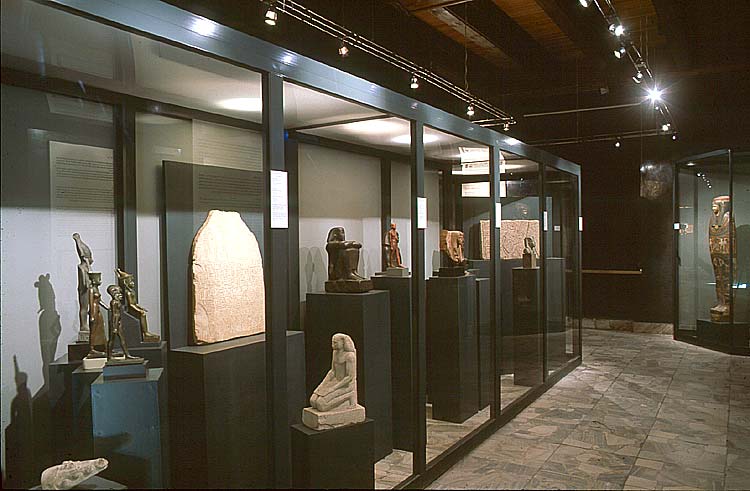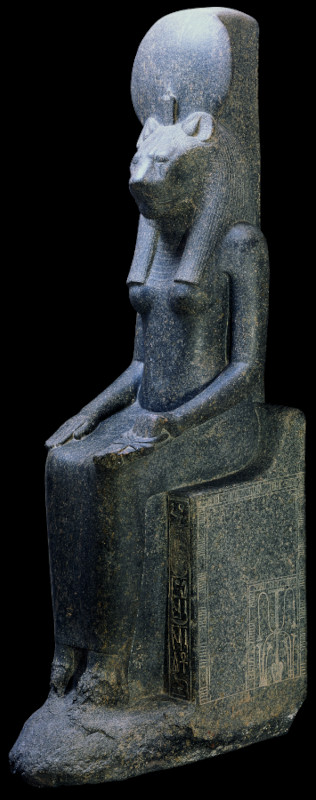Exhibitions
Departments
Statue of Sekhmet
Berlin, Inv. No. ÄMB 7268
Material Granodioryte
Dimensions: heigh 223 cm, base: 55 x 95 cm
Provenance: Enlosure of Mut Temple, Karnak; originally a mortuary temple
of Amenhotep III in west Tebs
Date: 18th dynasty, rule of Amenhotep III, ca. 1380-1360 BC
The visitors to the Archaeological Museum are welcomed in the entrance hall by a statue of the goddess Sekhmet. Sekhmet (‘Powerful’) was a lioness-headed goddess of war and maternity, a dangerous ‘solar eye’ destroying enemies of the sun-god and causing illness, and at the same moment being the cosmic mother of the pharaoh. The statue was found at Karnak, in the temple precinct of the goddess Mut, the god Amun’s wife. Originally, however, like several hundred similar ones it stood in the mortuary temple of Amenhotep III at Kom el-Heitan in Western Thebes. These statues formed a kind of a litany in stone, each of them representing one of the aspects of the goddess, with a distinctive epithet. After the temple was destroyed by an earthquake, many statues were transferred to Karnak enclosure of Mut, with whom Sekhmet might have been identified.
The text beside the right leg: ‘Good/Perfect God, Lord of the Two Lands, Nebmaatra, beloved of Sekhmet, who is beloved of her lord, given life, eternally.’ The text beside the left leg: ‘Beloved Son of Ra, Amenhotep, Ruler of Thebes, beloved of Sekhmet, who (i.e. the goddess) is beloved of her lord, given life, eternally.’ The name of Amun in the king’s cartouche had been erased during the Amarna period and subsequently roughly restored.
The sides of the throne are decorated with the motif of sema-tawy (‘Unification of the Two Lands’). On the right side of the throne there is engraved inscription of J. J. Rifaud, who claimed to have discovered the statue: ‘D[ecouve]rt par J[ac]q[ues] Rifaud sculpteur t.s.‘
| <<Home | Tutakhamun>> |
Nasza strona internetowa używa plików cookies (tzw. ciasteczka) w celach statystycznych, reklamowych oraz funkcjonalnych. Dzięki nim możemy indywidualnie dostosować stronę do twoich potrzeb. Każdy może zaakceptować pliki cookies albo ma możliwość wyłączenia ich w przeglądarce, dzięki czemu nie będą zbierane żadne informacje. Dowiedz się więcej jak je wyłączyć. OK, Rozumiem




